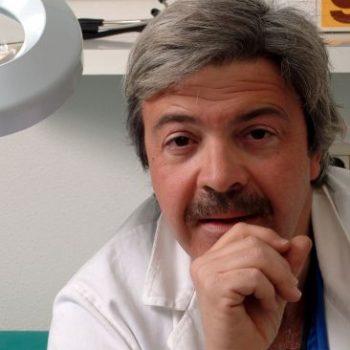This condition affects the breast during its development, starting from puberty and for many teenagers it is a problem to be solved. The tuberous or stenotic sinus is an increasingly common breast abnormality. Girls suffering from this developmental malformation have narrow, elongated and falling breasts from a very young age. We talk about this topic with Professor Marco Klinger, Head of Plastic Surgery at Humanitas and a great expert in this type of anomaly.
The causes
“The mammary gland develops in an anomalous way and is concentrated in the area behind the areola, becoming choked in the lower part, precisely stenotic, and hanging unnaturally downwards – explained Professor Klinger – The causes behind this anomaly and their increasing incidence are not yet fully clarified, it seems that environmental pollutants and hormones taken through diet can play a role”. “An exception is Poland syndrome, a rare anomaly characterized by the absence or reduced presence of a breast, which sometimes also lacks pectoral muscle. It is thought that the syndrome of Poland may have its origin in an abnormality of embryonic vascularization, which leads to a lack of inflow into the pectoral area and subsequent malformations,” emphasizes Professor Klinger.
Surgery: the only way
The only way to correct the tuberose sinus is by plastic surgery. However, at the same time, it is only through a correct diagnostic framework and with the right technical knowledge that it is possible to plan the appropriate intervention for each patient, in order to obtain a surgical correction that guarantees natural and stable results. This is confirmed by Professor Klinger, author of two reference studies on the subject: “The Prevalence of Tuberous/Constricted Breast Deformity in Population and Breast Augmentation and Reduction in Mammaplasty Patients”, published in the magazine Aesthetic Plastic Surgery in August 2016 and “Stenotic Breast Malformation and its Reconstructive Surgical Correction: A New Concept From Minor Deformity to Tuberous Breast”, published in the same magazine in April 2017. The first is an epidemiological study of the incidence of stenotic sinus in the population, which shows that there is a high prevalence of women with stenotic sinus in patients who require breast correction, many of whom, however, were not aware of the cause of the atypical form of their breast. It talks about 604 women with breast malformations out of a total of 1,600 women visited from 2009 to 2014. It is important to take this into account when planning a corrective intervention in these patients, precisely in light of their particular characteristics. The second article instead comes from the reflections of the previous work and led to the definition of guidelines that provide for each type of breast surgical maneuvers suitable for their correction.
How does the intervention work?
If well conducted, the operation leaves only one scar barely visible around the areola and requires hospitalization for only one night. The stitches are resorbable and therefore do not need to be removed by the surgeon. In the most serious cases and according to the regional provisions, the intervention is the responsibility of the National Health System and therefore is not onerous for the patient. “The surgery involves the remodeling of the mammary gland – explained the specialist – and is conducted under general anesthesia and therefore the woman who undergoes it does not feel any pain. The remodeling takes place with refined surgical techniques, which in the vast majority of cases involve the use of autologous fat, i.e. from the patient herself (lipofilling, with the removal of a few cc of fat from the abdomen or hips) and sometimes the implantation of silicone prostheses, always with the aim of giving the breast the correct shape, roundish. The choice of treatment type is calibrated to the individual patient, in a completely personalized manner and taking into account the characteristics of the breast”.







